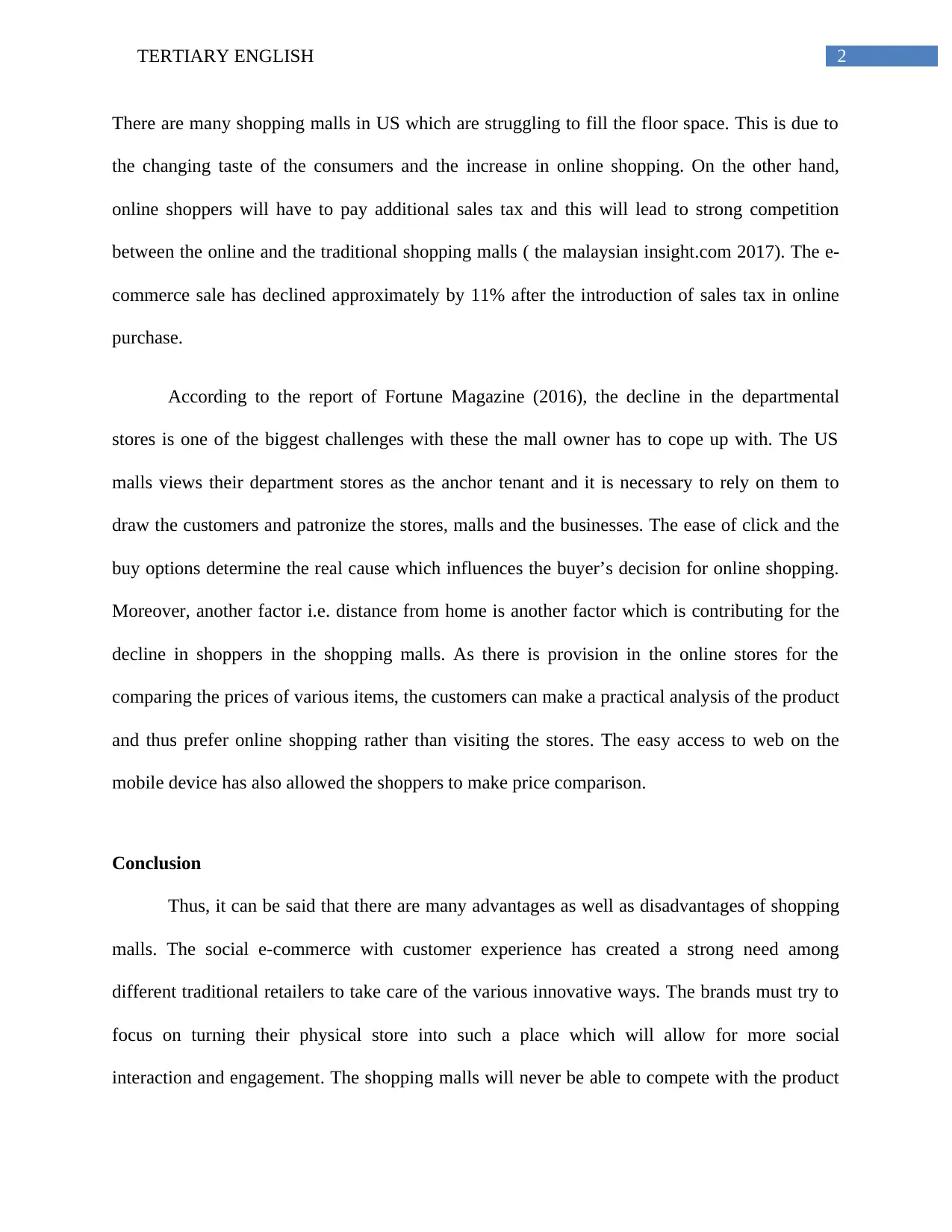Reasons Behind the Decline of Shoppers in Shopping Malls: An Analysis
VerifiedAdded on 2020/05/04
|5
|804
|127
Essay
AI Summary
This essay analyzes the decline in shopping mall shoppers, attributing the trend to factors such as the rise of online shopping, economic downturns, and shifts in consumer behavior. The essay examines how online platforms offer price comparisons and convenience, drawing shoppers away from physical stores. It also discusses the challenges faced by department stores, which serve as anchor tenants for many malls. The paper emphasizes the need for shopping malls to adapt by focusing on social interaction and customer experience, acknowledging that they cannot compete with online platforms on product selection or price. The conclusion stresses the importance of leveraging technology to enhance customer satisfaction and overall mall usability. The author cites various sources, including reports from Forbes, the New York Times, and Fortune Magazine, to support the analysis.
1 out of 5












![[object Object]](/_next/static/media/star-bottom.7253800d.svg)